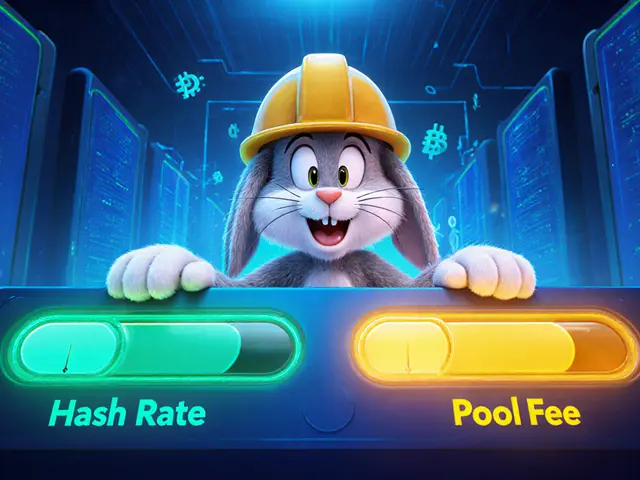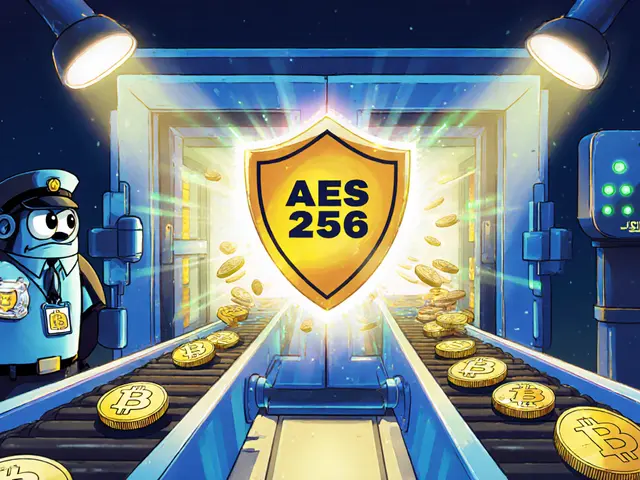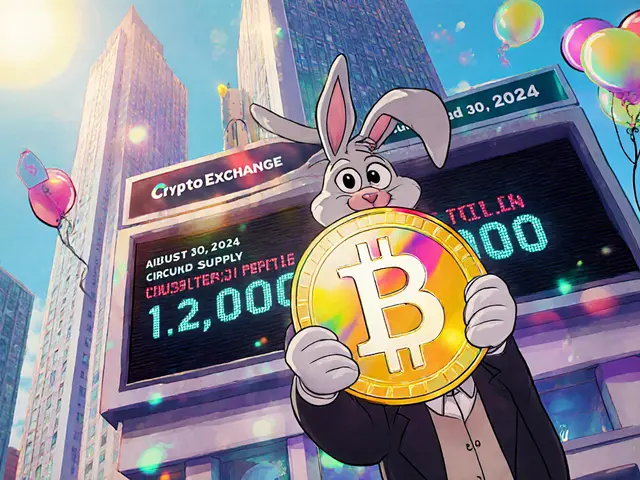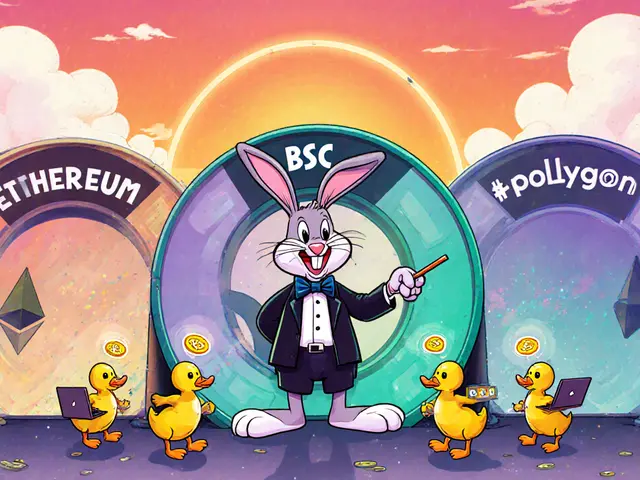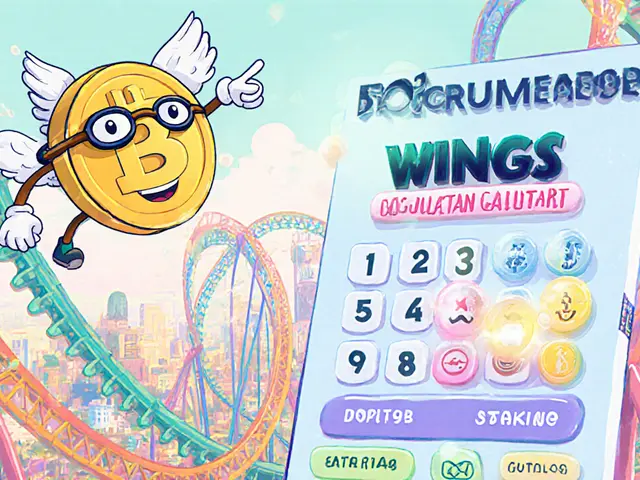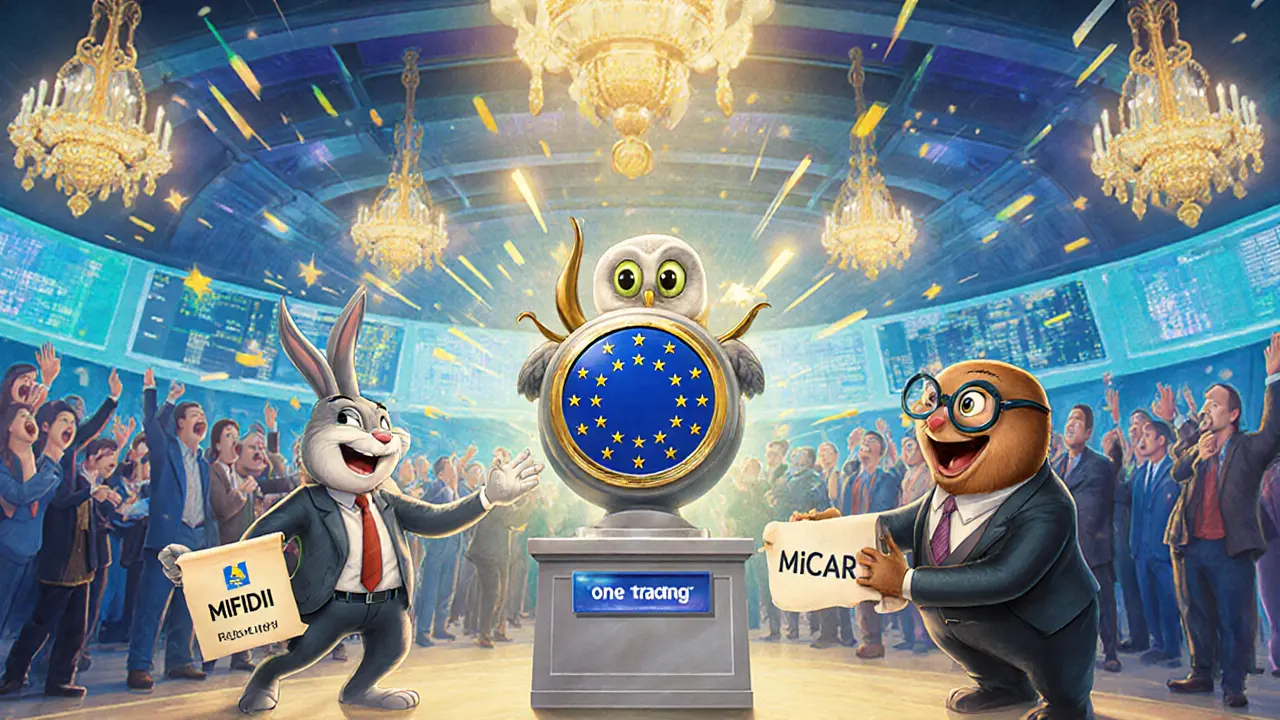
One Trading Fee Calculator
Estimated Trading Costs
Spot Trading Breakdown
Maker Fee: 0.00
Taker Fee: 0.00
Spread Cost: 0.00
Total Cost: 0.00
Perpetual Futures Breakdown
Maker Fee: 0.00
Taker Fee: 0.00
Funding Rate Impact: 0.00
Total Cost: 0.00
Fee Comparison Table
| Feature | One Trading | Binance | Interactive Brokers |
|---|---|---|---|
| Spot Fees | 0% maker/taker, 1% spread | 0.10% taker, 0% maker | 0.12-0.18% spread |
| Leverage (Futures) | Up to 10× | Up to 125× | Up to 5× |
| Demo Account | No | Yes | Yes |
| Educational Content | Minimal | Extensive | Comprehensive |
Key Takeaways
- One Trading operates under dual EU licences (MiFIDII OTF and MiCAR), giving it a regulatory edge over many crypto venues.
- Spot trading on the exchange is advertised as 0% maker/taker fees, but a 1% spread still applies.
- Perpetual futures can be traded with up to 10× leverage and 1‑minute settlement cycles.
- Execution speed is claimed to be 72µs, making it one of the fastest venues globally.
- Security relies on Multi‑Party Computation (MPC) custody, while the platform lacks demo accounts and robust educational tools.
When you type One Trading is a European‑registered crypto exchange that offers spot trading and perpetual futures under a dual EU licence (MiFIDII OTF and MiCAR), the first thing most traders notice is the regulatory badge. In a space crowded with unregulated platforms, that badge can be a deciding factor, especially for institutional or high‑net‑worth retail clients who need compliance guarantees.
Regulatory Backbone
One Trading holds two key licences:
- MiFIDII Organised Trading Facility (OTF) - authorises the exchange to list and clear crypto derivatives for eligible EU investors.
- MiCAR (Markets in Crypto‑Assets Regulation) - classifies One Trading as a Crypto‑Asset Service Provider (CASP), obliging it to meet strict AML, KYC and client‑protection rules.
These licences mean the platform must maintain transparent order books, segregated client assets, and a clear audit trail - features that most purely crypto‑native exchanges skip. However, the regulatory scope also limits access to EU‑eligible participants, so users outside the region may hit geo‑restrictions.
Trading Products
The exchange offers two main product lines:
- Spot Trading - over 100 crypto‑to‑crypto and crypto‑to‑fiat pairs. Order types include market, limit, advanced limit and stop‑limit.
- Perpetual Futures - contracts settle every minute, with up to 10× leverage. The platform advertises “ultra‑low” taker/maker fees, though exact percentages are not publicly disclosed.
For quick conversions, One Trading provides an Instant Trade feature. It simplifies swaps but imposes a €5,000 minimum order size, effectively excluding casual retail traders.
Fees and Cost Structure
Understanding the fee model is crucial because a “0% maker/taker” claim can be misleading.
| Product | Maker | Taker | Spread | Other Costs |
|---|---|---|---|---|
| Spot | 0% | 0% | 1% (average) | Network gas fees, external wallet fees |
| Perpetual Futures | Undisclosed (claimed low) | Undisclosed (claimed low) | 1% funding rate impact | Leverage financing, possible liquidation fees |
For fiat deposits, the platform supports SEPA (EUR), SWIFT (CHF) and Faster Payments Service (GBP). While deposits are free, withdrawals may incur bank‑specific fees that are passed on to the user.
Performance and Execution Speed
One Trading markets itself as the "fastest venue in the world" with a quoted round‑trip execution time of 72µs. Independent latency tests by Daytrading.com recorded sub‑100µs execution under low‑load conditions, confirming the claim for high‑frequency traders. However, real‑world latency can increase during peak periods, especially when many participants are accessing the same order book.
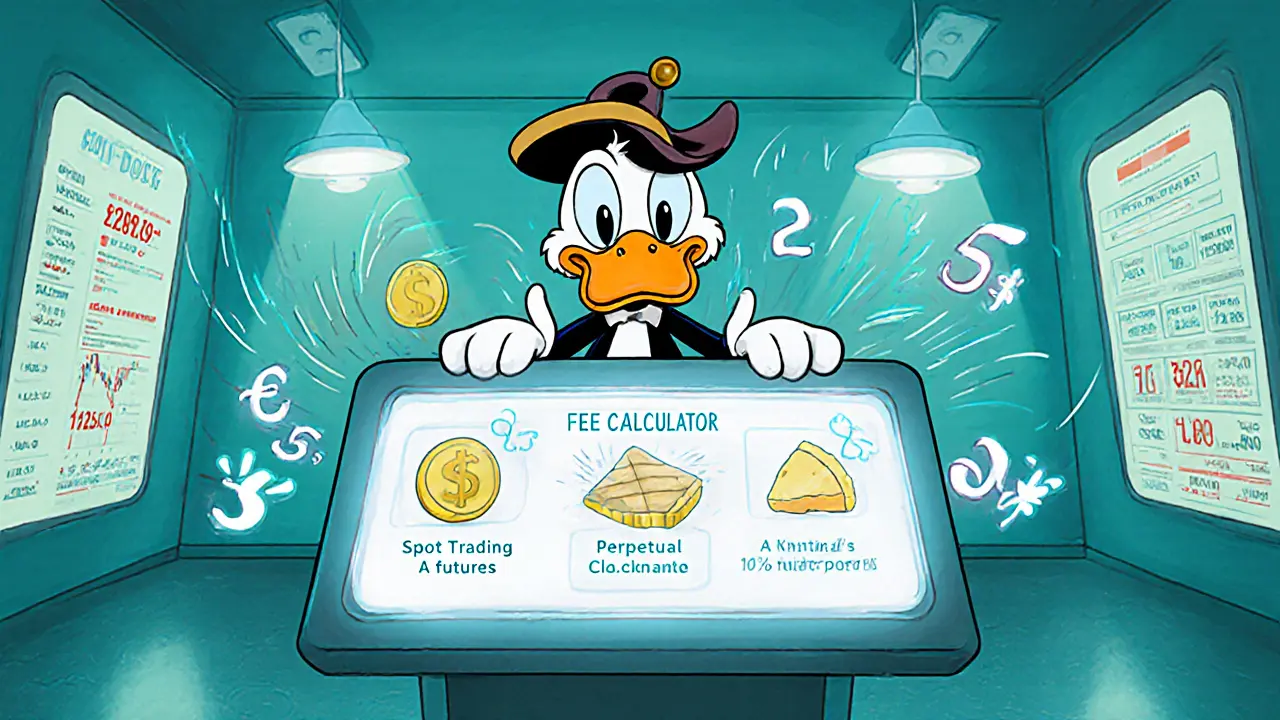
User Experience and Tools
The web UI integrates TradingView charts, offering nine timeframes, seven chart styles and dozens of technical indicators. Users praise the clean layout, but a few note minor customization glitches (e.g., indicator positioning). Mobile apps for iOS and Android are up‑to‑date, with the Android version refreshed on July112025.
Notably missing are:
- A sandbox or demo environment - reviewers label this a "significant drawback" for newcomers.
- Structured educational content - no webinars, courses or market‑analysis newsletters.
API access is available for algorithmic traders, providing REST endpoints for order placement, market data retrieval and account management. Documentation is concise but assumes prior API knowledge.
Security and Custody
Custody is built on Multi‑Party Computation (MPC) technology, splitting private keys across multiple parties to prevent a single point of failure. The platform offers a free non‑custodial wallet for spot balances, while futures positions remain on‑chain with institutional‑grade safeguards.
All data in transit is encrypted via TLS 1.3, and users can request full data deletion under GDPR. While the security stack is solid, the lack of a bug‑bounty program (as of October2025) may limit external scrutiny.
Pros and Cons
- Pros
- Dual EU licences - market‑grade regulatory confidence.
- Ultra‑low latency execution, suitable for high‑frequency strategies.
- Zero maker/taker fees on spot, simplifying cost calculations.
- Institutional‑grade custody via MPC.
- Full API for programmatic trading.
- Cons
- High €5,000 minimum on Instant Trade - not retail‑friendly.
- No demo account or structured learning resources.
- Spread of 1% can be costly compared to low‑spread brokers.
- Geographic restrictions limit non‑EU users.
- Relatively new - long‑term reliability still unproven.
How It Stacks Up Against Competitors
| Feature | One Trading | Binance | Interactive Brokers | Dukascopy |
|---|---|---|---|---|
| Regulation (EU) | MiFIDII + MiCAR | None (self‑regulated) | FINRA, FCA, etc. | FINMA (Swiss) |
| Spot Fees | 0% maker/taker, 1% spread | 0.10% taker, 0% maker | 0.12‑0.18% spread | 0.10% spread |
| Leverage (Futures) | Up to 10× | Up to 125× | Up to 5× (IBKR Crypto) | Up to 20× |
| Demo Account | No | Yes | Yes | Yes |
| Educational Content | Minimal | Extensive | Comprehensive | Good |
For European institutions that need compliance, One Trading beats Binance on regulator credibility. For retail traders seeking low spreads and education, platforms like Interactive Brokers or Dukascopy may feel more comfortable.
Final Verdict
If you are a professional or institutional trader operating in the EU and you value regulatory certainty and sub‑microsecond execution, One Trading is a solid choice. The 0% maker/taker fees are appealing, but remember the 1% spread and the €5,000 Instant Trade floor. Beginners should look elsewhere until the platform rolls out a demo environment and richer learning tools.
Frequently Asked Questions
Is One Trading regulated in the EU?
Yes. It holds a MiFIDII Organised Trading Facility licence for derivatives and a MiCAR licence as a Crypto‑Asset Service Provider, making it the first EU‑regulated crypto perpetual futures venue.
What are the fees for spot trading?
Spot trades have 0% maker and taker fees, but a 1% spread is applied to the quoted price. Network gas fees and any external wallet fees are additional.
Can I trade with leverage on One Trading?
Yes. Perpetual futures support up to 10× leverage, with 1‑minute settlement cycles. The platform does not disclose exact taker/maker fees for futures.
Is there a demo or sandbox account?
No. One Trading currently offers no demo environment, which many reviewers cite as a drawback for new traders.
How does the platform protect my assets?
Assets are secured using Multi‑Party Computation (MPC) custody, segregated client accounts, TLS1.3 encryption for data in transit, and compliance with GDPR data‑deletion requests.

